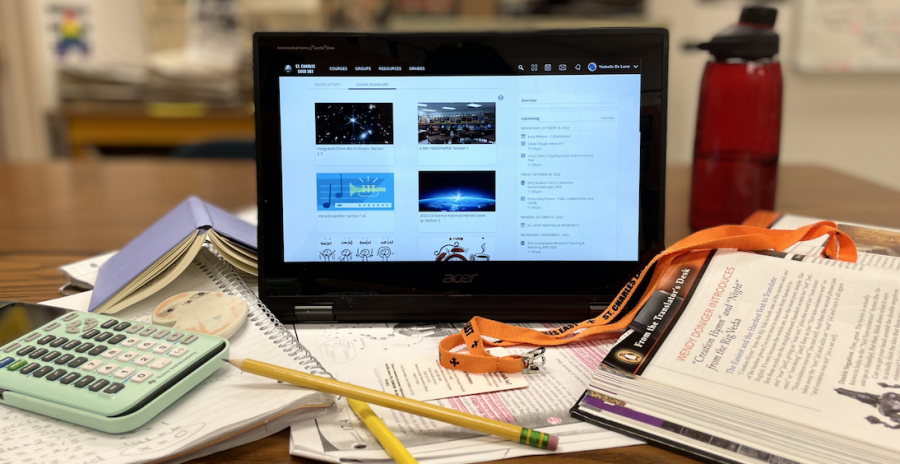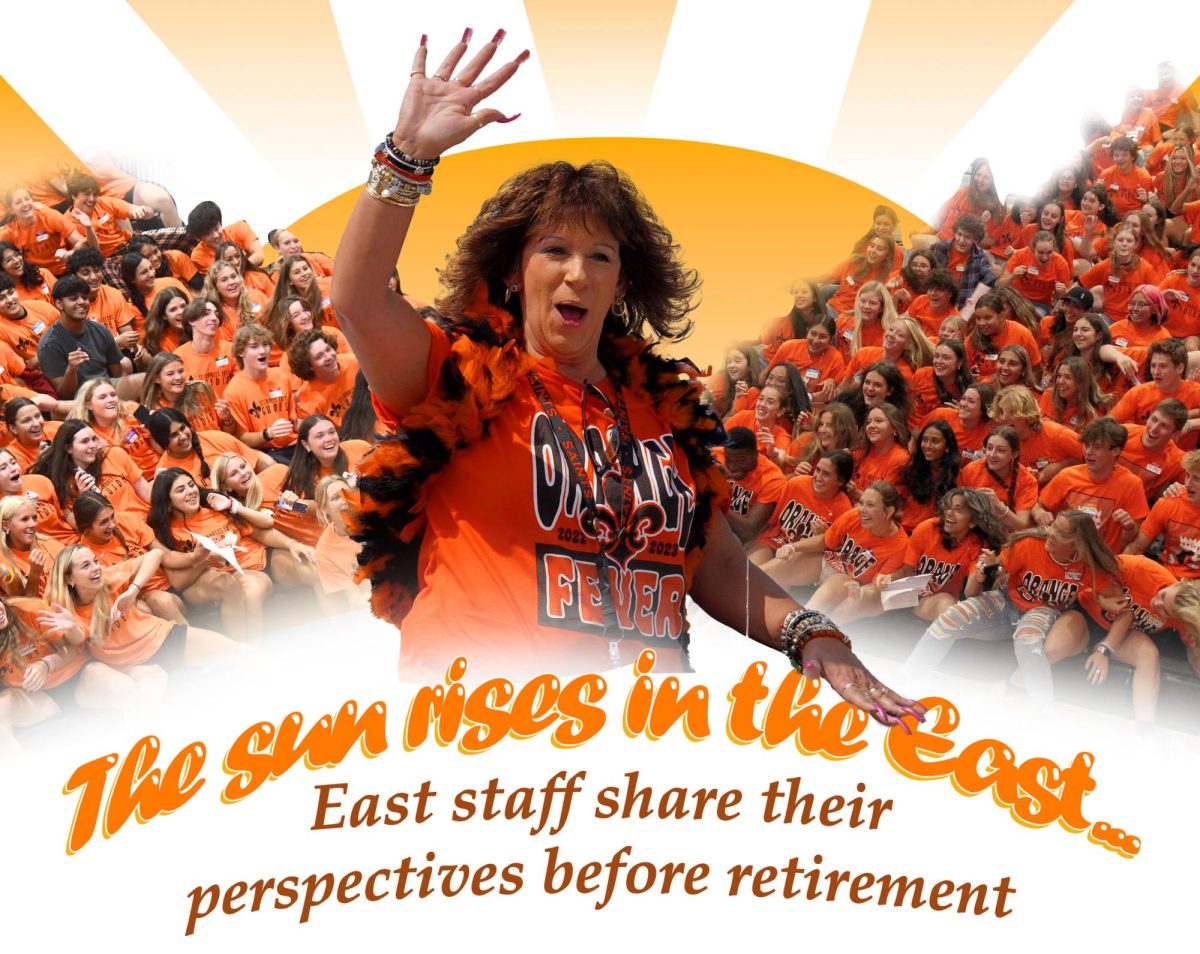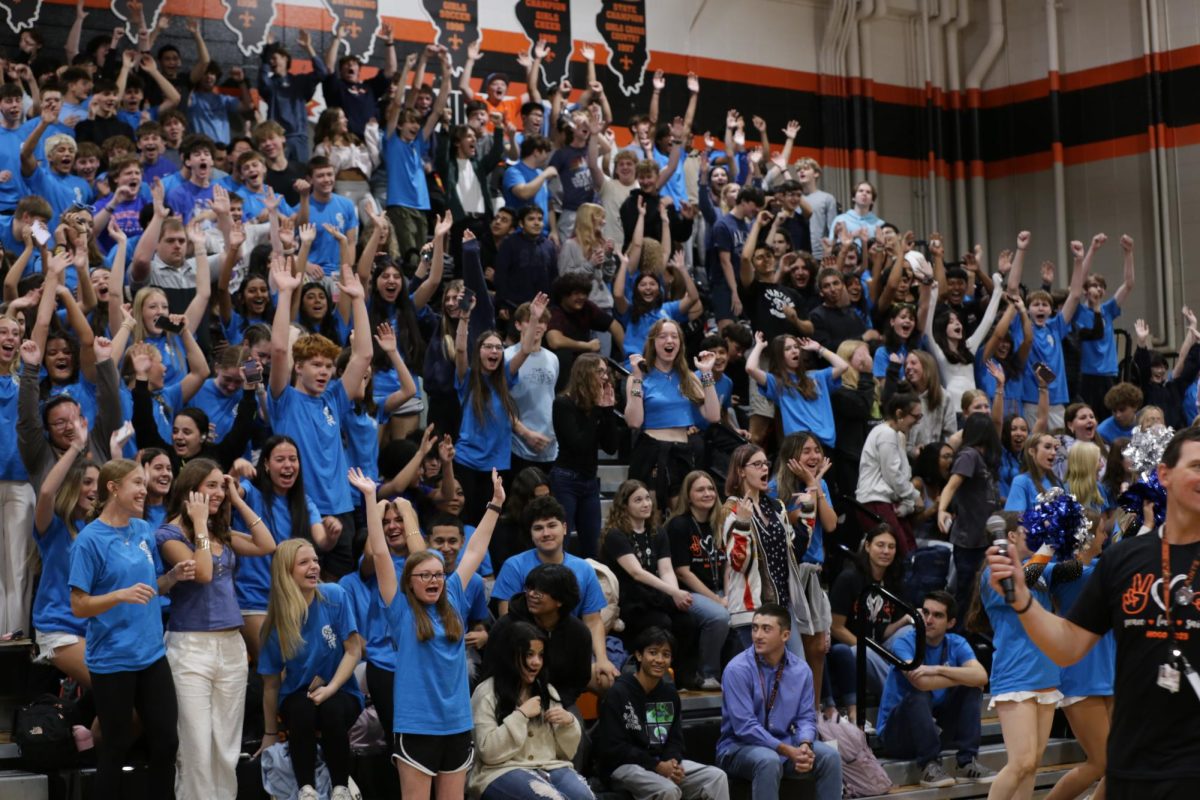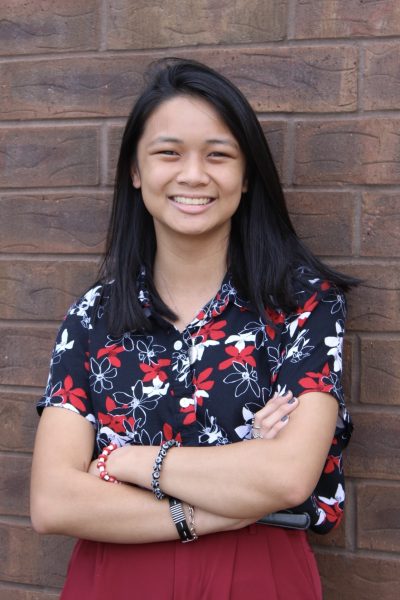D303 made a commitment to a new Learning Management System a few years ago, and now that it is in full swing, some are not so sure they approve of the switch.
There are those who still prefer Google classroom. And there are those who see the benefits of what Schoology offers. And some think it will just take time to adjust.
The X-ray staff decided to survey students and staff in order to get a sense of the attitudes out there, now that it is officially in effect.
To add to the story, we also conducted interviews with teachers and students and administration in order to gain more perspectives.
On May 9, 2021, a $68,400 contract was signed between D303 and the learning platform Schoology, as stated in a public report on the D303 website. At the beginning of the 2021-2022 school year, students were made aware that D303 would be making a district-wide switch to Schoology in the 2022-2023 school year, replacing its predecessor Google Classroom.
This year, East students and staff are seeing the effects of the switch, and many have opinions about it.
Many students have had some previous experience with using Schoology in the past, but not to the extent that this year’s “switch” entailed.
Senior Chulo Onwuta recalled, “…for the last two years [we] have been using it. Some teachers were required to use it, […] usually they chose not to, but some teachers opted to stay with Schoology.”
Many people have questions about why the switch occurred in the first place. We were able to get in contact with Sarah Cann, the leader of D303’s Schoology implementation since July of 2020, as well as our principal, Jim Richter.
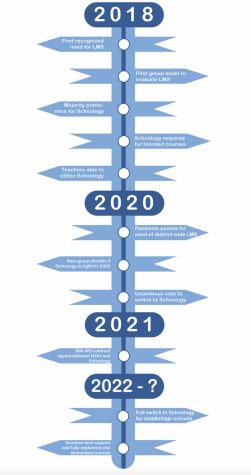
Richter and Cann revealed that the plan for Schoology had been in the works since 2018 when a pilot group of high school teachers and administrators saw the need for a proper learning management system or an LMS. They described an LMS as a system that facilitates learning by being a one-stop shop for all the resources that students and teachers need for a clear learning experience. At the time, Google Classroom did not fit this description, leaving the main three contenders as Schoology, Canvas, and Blackboard.
Cann described Google Classroom as more of a “file sharing system” due to its inability to provide many of the features that Schoology and other LMS options are able to integrate into their platform.
“When we’re talking about Google Classroom specifically, there are areas of Google Classroom that do not meet [students’] needs,” she says. “We need a system that the teachers don’t have to do any work on the back end. […] You can’t do that with Google Classroom: you have to get a join code, the teacher has to get you in there–there [are] too many steps.”
After evaluating these different options, the pilot group decided on Schoology. Originally, they drafted a timeline for it to be implemented into blended learning programs before having it filtered into other courses.
However, Cann stated that after the pandemic hit, parent and student frustration about navigating multiple systems made it clear to the administration that the whole district needed one LMS to funnel all of these systems into. Another group was created with an even more diverse pool of educators to make sure that Schoology was the LMS that would be right for the district’s needs.
The group evaluated student and teacher feedback and data, which included surveying teachers and students on their opinions of the platform, consulting teachers with previous Schoology experience, and looking at analytics on the course materials within Schoology. After looking through all of this, the group unanimously decided to stick with Schoology.
But what are the benefits that Schoology provides? Cann detailed many of these features alongside the true potential of this platform. One prominent goal was the use of Schoology to prepare students for their futures by developing what she called “digital literacy.”
“When we consider the needs of the district and of moving our students to be digitally literate and successful outside of the four walls of the school, we need to consider the skills that are going to make them successful outside of here,” she stated.
“One of our goals, or strategic commitments, was to provide students with those innovative learning experiences that prepare them for those post-secondary opportunities.”
There is then the prominent goal of integrating all of the system’s teachers and students could need without having to do extra work. Part of this includes what Cann described as ‘digital accessibility. Cann stated, “Not all students learn the same way. The ability to adjust and modify are much more simplified and streamlined using a fully implemented LMS. [For example,] when you see a worksheet which may be really easy for you to do, [that] may be incredibly challenging for another student and an LMS would provide other options for that student such as having it read to them, or maybe they would rather watch a video instead of reading something. […] It just provides that different mode of learning.” One feature she describes which provides specific help on is called Immersive Reader, a tool that can do a range of things such as reading a passage out loud, translating it into over 60 languages, or adjusting its visibility to those visually impaired. Cann believes that Schoology will help students to “…really own that learning process and help you become a better student.”
Richter reinforced this idea when describing his knowledge of these benefits. “My understanding is that Schoology allows students to have a more personalized [learning] pathway. As we continue to try and respond to our students and provide them instruction that meets their needs, Schoology allows that to be seamlessly delivered in a more personalized fashion.”
When asked about the communication sent out to teachers and students about this switch, Cann stated, “We’ve been training [high school teachers] for years, and so we do have some guidelines for teachers on what they’re supposed to have in their digital classroom. […] For students, it’s expected that the teacher goes over that the first week of school, what their Schoology environment looks like.”
However, Cann acknowledged that this may not have happened in all classrooms. “All of the teachers are beginning to use it, we’re all in those beginning stages,” she said. “So everybody needs grace, everybody needs patience, and education on what it is and why we’re using it and how to [effectively] use it.”
One common concern was the thought of what may potentially be taken away in favor of this full implementation. The most prevalent concern was the potential removal of HAC, a platform that many students and teachers are attached to. English teacher Laura Smith said, “There’s a lot of things that HAC does for teachers that Schoology doesn’t. [If] your student [has] special education accommodations, we have that linked directly on HAC, [and] all of their medical alerts are on HAC.”
However, when asked about this possibility, Cann stated, “No. […] The best place to see your work and the feedback from your teachers is going to be on Schoology. […] The ultimate/end grade is [on] HAC.”
Richter provides more insight into the future of these platforms. “eSchool (the company that owns HAC) is now actually owned by PowerSchool (the company that owns Schoology),” he says. “My understanding is that their investment continues to be in the PowerSchool platform. So eventually, as they continue to put more emphasis on PowerSchool, it’s going to make eSchool’s capabilities a little more obsolete.”
When asked further about the future plans for Schoology, Cann responded that “we are only at the very beginning of our implementation.”
She went on to say, “Once we get full implementation and once we get everybody educated on what a high-quality digital environment looks like and what the possibilities are, it’s going to be great. […] We really want to transform the learning that happens in the classroom. That’s really the ultimate goal. […] But it takes some time.”

Students and teachers were surveyed at the beginning of the school year. (Graphics by Yzebelle de Luna)
Although, many people still have opinions about this switch. In a school-wide survey X-Ray sent out in late September, 91.4% of nearly 400 students who respond- ed disagreed to some extent when asked if they were satisfied with the switch, coupled with 70.4% of over 60 staff. (See graphs above and below.) Though it is important to keep in mind that these surveys are still susceptible to bias, considering that those with the most polarizing opinions are the most likely to respond.

(Graphics by Yzebelle de Luna).
To fully represent the vast array of opinions, we looked to interview students and teachers with more polarizing viewpoints.
Onwuta elaborated on his more critical view, stating that “…making such a huge shift so quickly was just bound to cause mistakes. […] It was just a lot of confusion all around; people didn’t know how to use it or how to adapt to it.”
He acknowledged that there are positives to Schoology but felt as if there may have been some miscommunications along the way that caused a ripple effect of disorientation. “[It’s] been proven effective, but the effect is kind of taken away when not all teachers use it [the same way]. […] You need to put more effort into educating the teachers so they can educate us better.
Freshman Tessa Muenz also agreed with this lack of communication. “The way that they told us to do it was just, ‘use it.’ They didn’t tell us anything at all–they just said ‘here’ and decided just to wing it,” they said. “They gave us a completely different platform while a bunch of people was freaking out about everything else.”
Some teachers also have strong opinions about Schoology. English teacher Laura Smith reported having a multitude of technical difficulties that have made her lose all trust in the platform. “I’ve spent so many hours of my life trying to make simple things happen on Schoology that I will never get back, and I refuse to spend any more this way.”
She went on to explain how this has impacted her ability to teach effectively. “I was stalling my kids and my classes until I could make [a] post somehow. […] I now no longer trust that something I work on is going to stay there…so that really demotivates me into putting a lot of energy into something.”
She also believes that not enough communication has been given for teachers to fully understand why this switch occurred. “The only reason I’ve been given that we need Schoology is because ‘Google Classroom is not an LMS.’ And then I say, ‘Well, what’s an LMS? And what does it do that Google doesn’t?’ And I’m not getting clear answers on that. […] If I understood why this was such an important thing, I might have more patience.”
When asked if she feels that this switch was made in the best interest of students and/or teachers, Smith responded, “[It was] not in the teachers’ best interest, and no one’s been able to tell me how it’s in the students.”
However, some oppose this stance to- wards the platform. Some have appreciated some of the features that Schoology has provided, such as having all features in one place or the way it is able to organize assignments.
Sophomore Cian McKenna said, “It gives us more experience with a more professional layout of stuff.”
He added, “I don’t think Schoology is as bad as people are making it out to be. I just think the switch is difficult.”
Mrs. Boie, an English teacher at East, had a similar perspective. Boie detailed her experience with taking training courses on Schoology many years before it was required and thus was able to provide a more refined experience for her students. “There are some things that I wish it would or could do that it doesn’t,” Boie acknowledged, “…but I think that’s going to be with anything. […] I know it’s not perfect, nothing is.”
In regards to her thoughts on using Schoology in the future, Boie stated, “Education is very cyclical. Things come around and then the wheel gets reinvented, but it’s pretty much the same thing. […] But I think kids will get used to it. Teachers will get used to it. It just takes time.”
It doesn’t seem like Schoology will be going anywhere any time soon, but Richter and Cann have said that there is still work to be done. Cann states that the district is only looking to improve the use of
Schoology, with plans to implement Schoology in elementary schools next year. The district aims to educate teachers further and get them more familiarized with the platform with the hopes that over time, the full potential of Schoology will be realized.
Many teachers and students had opinions on how to improve their experiences with Schoology. Common complaints from students were related to the long-winded nature of submitting assignments and the general fact that this switch was too much all at once.
“I feel like it’s just doing too much,” said Onwuta. “There’s NewsELA, there are all these tabs on the left that you can go into–which is fine, but usually they’re just kind of there, just in the way. So if I were to remake Schoology and make it better, I’d improve the user interface. Make it a lot easier to get around.”
When asked what changes she would make to Schoology, Smith simply said, “[I’d] make it work.” She went on to question the mindset of students with regard to this change. “What are our struggling students going through? Because I feel like each button they push is an opportunity for them to just give up. […] I would make it more user friendly, I would make it more streamlined, [and] I would want it to be intuitive [so] that you know what to open and what to look at and [know] what the commands mean.”
Richter and Cann have both heard the opinions of those who are not in favor of the platform, but both believe there will be a benefit to using Schoology in the future.
“My job, I think, is to listen [and] to try and provide a conduit to try and help find support [and to] continue to be positive about Schoology,” Richter said. “I do think that if used in the way that it can be used to its [fullest] potential, I do think it can do some really great things for students.”
When asked what she would say to those who doubt Schoology, Cann said, “This is how we are preparing our students to be successful outside of here. And I would ask for them to just… trust the process.”
Survey results for students showed that they were not as optimistic as the teachers were for “the long run.” (Graphic by Yzebelle de Luna)
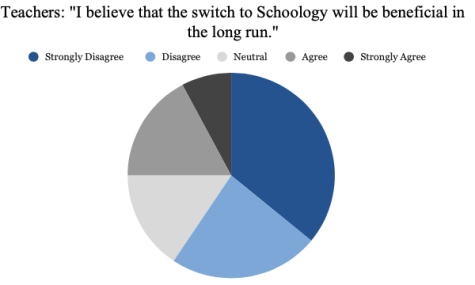
Story update on November 28, 2022.


